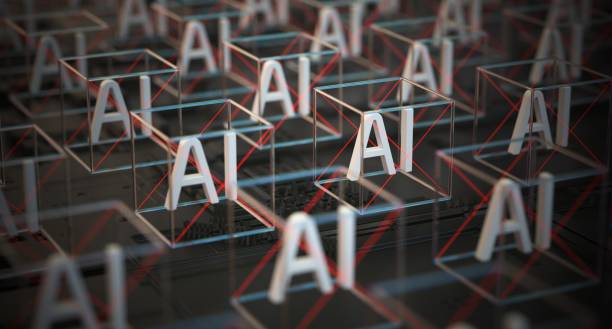
On 15 March 2023, in his spring budget, Britain’s Chancellor of the Exchequer Jeremy Hunt announced a suite of policies aimed at reinvigorating the country’s sluggish productivity growth, including £27bn ($34.6bn) for businesses in investment tax breaks and £3.5bn to boost workforce participation. This comes as the latest figures by the Office for National Statistics show that UK productivity has returned to its weak post-financial crisis trend following the upheavals of Covid-19.
Meanwhile, warnings of an impending stagflation are proliferating across the globe, with the UK’s short-dated bond yields jumping to a 15-year high in June 2023, and GDP growth expected to remain close to zero for the foreseeable.
However, widespread adoption of artificial intelligence may relieve inflationary pressures more quickly than currently assumed. On June 14 2023, BlackRock’s Larry Fink told investors that AI presents “transformational opportunities” and could potentially solve the productivity crisis that he blames for chronically high inflation.
Investment banking heavyweight, Goldman Sachs, also believes that generative AI could drive a 7% (or almost $7trn) increase in global GDP and lift productivity growth by 1.5% over a 10-year period, while also exposing the equivalent of 300 million full-time jobs to automation. The result? Fewer supply-side challenges and lower rates of inflation.
Indeed, many experts believe that the market is wrong to treat the current inflation surge as “sticky”, arguing that the inflationary pressures of the past few years are a function of supply chain dislocations. Ark Invest’s CEO Cathie Wood has said that “[i]nnovation is inherently deflationary” and that “by this time next year we’re all going to be talking about deflation, and the Fed will have not only pivoted, it will also be running in the opposite direction.”
Could AI bring about 1990s-style disinflation?
In the 1990s, forecasters were surprised when their predictions of an uptick in inflation were confounded by the dawn of the internet. The internet lowered market entry costs, shortened supply chains, and enhanced job matching, thereby boosting productivity and reducing inflation rates – a result that defied the Phillips curve.
How well do you really know your competitors?
Access the most comprehensive Company Profiles on the market, powered by GlobalData. Save hours of research. Gain competitive edge.

Thank you!
Your download email will arrive shortly
Not ready to buy yet? Download a free sample
We are confident about the unique quality of our Company Profiles. However, we want you to make the most beneficial decision for your business, so we offer a free sample that you can download by submitting the below form
By GlobalDataThe Phillips curve theory suggests that inflation and unemployment have a stable and inverse relationship, and it still appears to be guiding monetary policy in the US.
However, Dario Perkins, economist for TS Lombard, believes that AI, like the internet in the 90s, may well transform productivity and ease inflationary pressures. In a recent webinar, he said that the economy is facing “deep structural problems” such as retreating globalisation and ageing populations, and that we are going to need robotics and AI technologies if we want to make the necessary productivity gains and re-shore manufacturing companies.
Perkins says that AI may well change the dynamics of the “macro supercycle” – the shifting balance of power between labour and capital: “for forty years, we’ve been in a world dominated by capital, and we were just beginning to turn that pendulum back towards labour because of deglobalisation, demographics and labour shortages. But I think that AI has the potential to reduce the amplitude of this cycle.” What this means, he says, is that AI will make the 1970s’ world of perma-stagflation and stagnating incomes “less likely”, potentially producing “an economy that works a lot better for most people.”
However, he adds that Altman-esque theories about AI driving the cost of labour down to zero and universal incomes are still “very fanciful at this point”.
The more cynical prognosticators, on the other hand, are forecasting outright deflation. Rich Karlgaard, writing for Forbes, foresees AI-inflicted “carnage” for the world’s educated, white-collar labour force, and notes that there is no precedent for the speed and scale of generative AI. He thinks that countries such as India and the Philippines, which have built large industries around offering low-cost outsourced white-collar jobs such as software coding, will be particularly hard-hit.
His prediction? “Interest rates will start heading down in the second half of 2023 as professional services inflation rapidly turns into deflation and drags most inflationary pressures with it.”
Return of the Solow Paradox in AI?
In 1987, the economist Robert Solow famously quipped, “You can see the computer age everywhere but in the productivity statistics”, drawing attention to a strange economic enigma: even as we live with a sense of accelerating technological progress and innovation, productivity has trended downward for more than 50 years.
Will AI buck this paradoxical trend and boost productivity while reducing inflation? At least for now, there is little sign that artificial intelligence is affecting productivity statistics. Since 2005, US labour productivity has grown at an anaemic 1.4%, while workforce participation has declined; in the UK, productivity grew at just 0.5% between 2008-2020, with the weakest annual growth since 2013 recorded for 2023 Q1.
Why, then, is AI not delivering the expected productivity gains? One possible explanation is that optimism about AI is misplaced, and that even though it confers modest benefits for specific sectors, its aggregate impact is small and is masked by the inflationary parts of the economy, such as housing, energy and food. Another explanation is that we are already enjoying the productivity benefits of these futuristic technologies, but they have yet to be accurately measured. Another again is that AI’s productivity gains are accruing solely to a few large technology companies, who are fighting to attain and preserve them.
An uncertain outlook for productivity and inflation?
Amidst a wide array of competing theories about the future of AI and inflation, TS Lombard’s Dario Perkins is optimistic that we will see the effect of AI productivity gains in the official productivity growth statistics within the next 2-5 years. He cites a yearlong study by MIT and Stanford which found that AI tools increased workers’ productivity at a Fortune 500 firm, and a study by Kalliamvakou (2022) which found that software engineers could code up to twice as fast using a large language model (LLM).
However, he adds that “while AI can help the world cope with the supply problems it faces in the 2020s, [I am] sceptical it will recreate the secular disinflationary trend of the past 40 years.”







